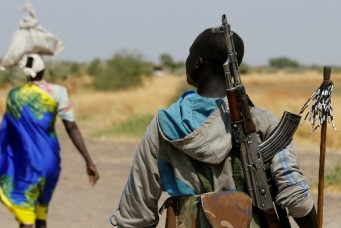The Rebirth of Sudan?
Sudanese demonstrations, starting in the city of Niyala in Darfur and extending to engulf Wad-Madin and Khartoum, took most observers by surprise. Few countries came out in support of the uprising. This uprising has now become strong enough to be called Sudan’s Revolution.
Sudanese demonstrations, starting in the city of Niyala in Darfur and extending to engulf Wad-Madin and Khartoum, took most observers by surprise. Few countries came out in support of the uprising. This uprising has now become strong enough to be called Sudan’s Revolution. This revolution is separate from the Arab Spring that led to the entanglement of revolutionary forces with the rotten foundations of the old systems, resulting in the failure of the governing elites to reconfigure the modern Arab states away from tyrannical and despotic establishments. The Arab Spring countries started with civilian strife and ended in bloodshed and militarization of their revolutions. On the contrary, in Sudan the armed revolutionary groups took the leading role for decades in Darfur, Blue Nile, and South Kordofan, South Sudan; only in the later phase did civil society, in both the center and the margins of the country, join the revolutionary march.
Sudan’s Revolution unites the forces of the marginalized areas with those of the center. It includes all Sudanese except the criminal elements of the current establishment that commit crimes and human rights violations. The aim of the Sudan’s Revolution is to offer a new beginning for collective action. It will found a new social contract, allowing Sudan to incorporate Arabism and Africanism, the margins and the center, into a customized cultural and regional identity for the nation-state.
How did the Sudanese reach the pivotal moment for collective action? This was a product of multiple agreements and memorandums of understanding signed by the civil-society groups and armed movements, including the New Dawn Charter. This charter was a genuine contribution presented by the forces of the margin to the elites in the center. In this charter, for the first time, the elites in Sudan, across ideological lines, reached a consensus toward the core objective of preserving Sudan from disintegration. All parties recognized that, in the journey to preserve the country, the stumbling block is the Khartoum regime. Removal of the regime demands Sudanese unity, the end of war, and better relation with neighboring countries and the international community. Another incident also led to increased confidence in the process: In May 2008, the attack of the Justice and Equality Movement (JEM) on the Sudanese capital demonstrated to the elites in Khartoum and to the masses that resistance movements were not in the capital to attack civilians or loot their properties; they were there to dislodge the despotic and corrupt regime that had divided the nation and squandered the national treasury. The efforts of the JEM paved the way to convince the elites that regime change is not deleterious to the elites in the center. Since then, broader conversations have started. The messages from the Sudan Revolutionary Front (SRF) last week, known as the “SRF Political Declaration,” clearly supported civil strife in the pursuit of democratic transformation, and commitment to a ceasefire once the regime has ended. This is a golden opportunity to provide assurances to youth and civil groups to pursue peaceful transformation and preserve the unity of Sudan.
There were several triggers for Sudan’s Revolution. First and foremost is the desire of the masses for change versus more of the same. “More of the same” means daily humiliation, genocide, corruption, and isolation. Most notable is protecting a corrupt regime from accountability and the International Criminal Court. Second, the economy is paralyzed, with a negative growth rate of 3 percent for two consecutive years. Economic inequality and poverty rates have reached unprecedented levels. Conservative estimates show a poverty rate of about 75 percent. The middle class has been decimated. Inflation is out of control at 53 percent. The total cost of the war in Darfur is $50.5 billion over the last 10 years, while the country has spent only 1.3 percent of its budget on public health and less than 1 percent on education over the past two decades. The war consumes 13 percent of GDP in a society that lacks the means to provide the basic entitlements of education, food, health care, and shelter to its people. The end of this regime will mean not only an end to the dismal performance of the economy; it will also restore hope that Africa can end the chapter of despotic leaders who tore apart their nations and squandered opportunities for future generations.
We call upon Sudan’s neighboring countries to support the change that is now underway, so that the country can be at peace with itself and with the rest of the world. Let us take advantage of the opportunity to find a lasting solution for Sudan through revolution.
The revolution has already united the Africans, Arabs, Muslim and non-Muslim under the banner of civil state, all equal under the law. Let us commit to the values of justice and freedom for all to liberate Sudan and allow the country to move gain.
Hamid Eltgani Ali is an associate professor and chair of the Department of Public Policy and Administration at the American University in Cairo.



